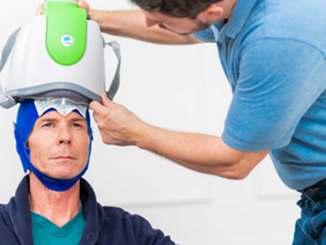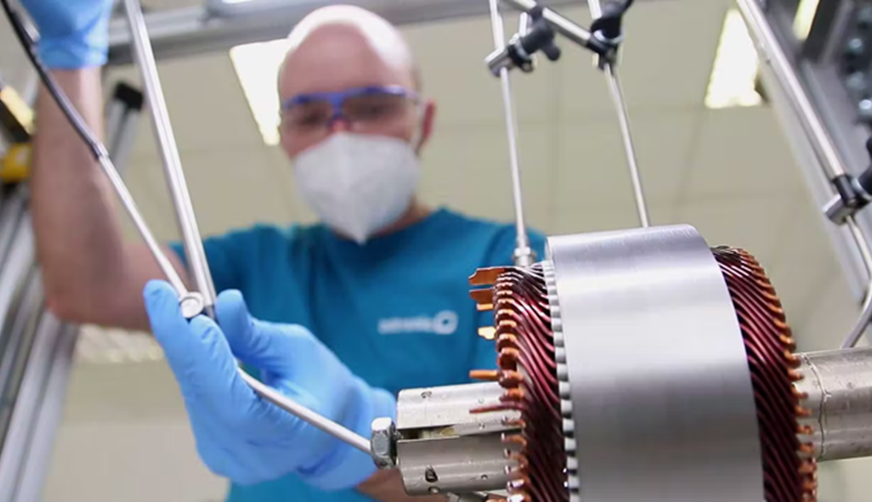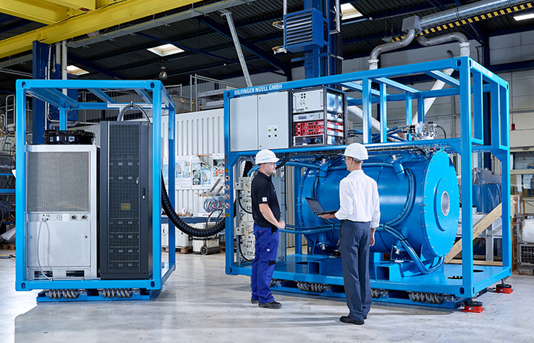
With groundbreaking new superconducting and fundamental scientific projects underway at major research facilities, Bilfinger Noell of Germany is playing a leading role in providing the sophisticated magnetics engineering expertise that is needed for them. The latest is a unique magnetic bottle for transporting antimatter that relies on a powerful cryogen-free 4-Tesla magnet, shown above during testing at the company’s plant in Wurzburg.
It is just one of several ongoing and recent projects in which the company, a producer of superconducting magnets and functional magnetic systems, has been involved recently. Another includes its progress on an order for 83 superconducting modules destined to be part of FAIR, one of the world’s largest research projects. Still others include a superconducting 9T solenoid, a large volume magnetic storage device for the PENeLOPE project in Munich, and a superconducting insertion device for an expansion project at the Australian Synchrotron.
Magnetic bottle
In December, its magnetic bottle for antiprotons reached TU Darmstadt where it will become a core device of the PUMA (antiProton Unstable antiMatter Annihilation) project. Led by TU Darmstadt, the project aims at storing and transporting antiprotons, the antiparticle of the proton, to be used as a new probe for investigating the structure of radioactive nuclei at ISOLDE/CERN. Gathering about 40 collaborators from 13 different research institutes and universities, the project is currently being evaluated to become a new CERN experiment.
Antiprotons will annihilate if they get in contact with matter. To store antimatter particles and prevent them from annihilation, they can be stored in an electromagnetic bottle called a Penning trap. The main apparatus of the PUMA experiment is the superconducting solenoid which provides the strong magnetic field to confine radially the charged particles. It is the first cryogen-free magnet ever built to transport antimatter on the road. Weighing 4 metric tons, the superconducting magnet is designed to be moved by crane and truck while operating. The solenoid and its integration into a transportable frame were contracted to BN. After successful factory testing, the solenoid was delivered to TU Darmstadt and transported to the experimental hall at TU Darmstadt.
The magnet provides a uniform 4T magnetic field, about 100,000 times the strength of the earth’s magnetic field, across a cylinder of 1m length with a diameter of 28cm, where the experimental devices will be placed. The magnetic field is created by a current of almost 200A flowing through niobium-titanium superconducting wires. The superconducting wires are maintained at cryogenic temperature of below 4K by two cryocooler heads without the need of any liquid helium or nitrogen. The solenoid is actively and passively shielded such that the residual field drops to 3 Gauss in less than 2m away from the solenoid, keeping a low magnetic field environment for the surrounding instruments.
The full experiment can be transported in operation with its uninterruptible power supply and battery set providing 80 kW for several minutes. The team of the group of Professor. Alexandre Obertelli at the physics department of TU Darmstadt started the research and development for PUMA. First experiments at CERN are planned in 2022.
83 QDM superconducting magnetic modules
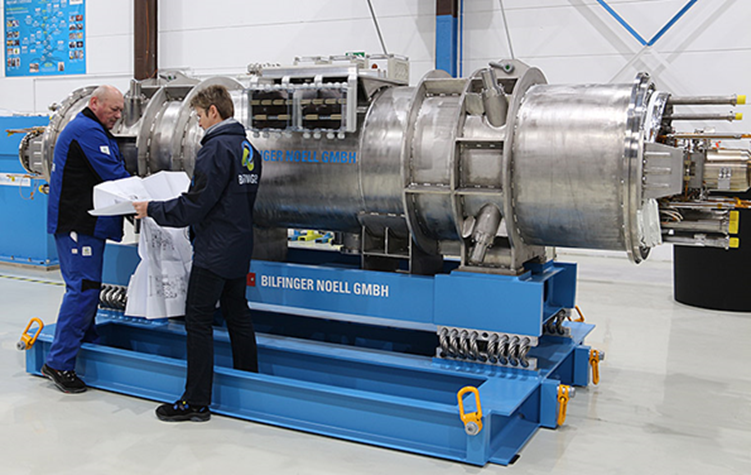
Having successfully passed an extensive test program, the first of 83 superconducting quadrupole doublet module (QDM) magnetic modules was delivered to GSI Helmholtzzentrum fur Schwerionenforschung in Darmstadt, BN reported in February. Besides the integration of the quadrupole module, the company is also responsible for the manufacturing of the cryostat vessel, the common girder, the thermal shield and other parts.
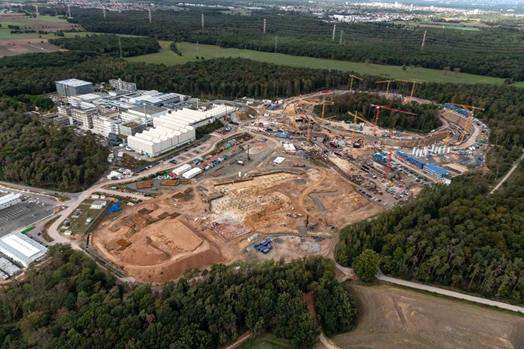
They are part of a major contract from GSI for the construction and delivery of 83 superconducting magnetic modules along with twelve additional modules to be used in the SIS100 accelerator ring at the Facility for Antiproton and Ion Research (FAIR). FAIR is one of the world’s largest research projects with an investment volume of more than €1 billion.
9 Tesla solenoid
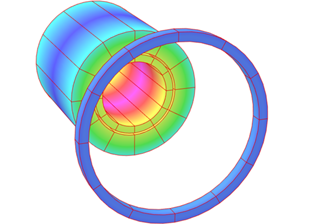
In another effort, in November BN successfully tested a 9T solenoid under cryogen-free conditions at 4K up to nominal current without any training quench, reaching a magnetic field slightly above 9T. The 96 mm cold bore magnet with NbTi conductor was designed for a homogeneity of 0.1% in 10 mm DSV (diameter of spherical volume). Possible applications are for sample environment, nanotechnology and quantum computing.

Solenoids and functional magnet systems are used in neutron research, for sample tests in magnetic fields as well as on accelerators. BN designs such magnet systems according to the customer specification and supplies complete systems with the relevant power supply units, vacuum technology and cryotechnology as needed.
Other projects
BN also recently developed, manufactured and delivered a large-volume magnetic storage device for ultra-cold neutrons to Technical University of Munich, it reported in June. The superconducting magnet system is for the university’s PENeLOPE (Precision Experiment on the Neutron Lifetime Operating with Proton Extraction) project to measure the lifetime of the free neutron with unprecedented accuracy.
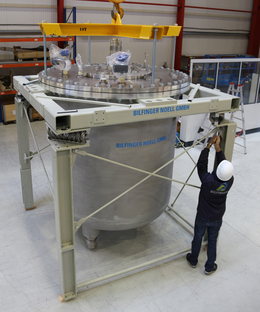
Also in June, BN was awarded a contract for a superconducting undulator (SCU) insertion device from the Australian Synchrotron in Melbourne, one of the user facilities of ANSTO. The device is dedicated to the BioSAXS beamline and part of the new Bright Program. With this new SCU in Australia, superconducting insertion devices from BN will be in operation on three continents worldwide, the company notes.
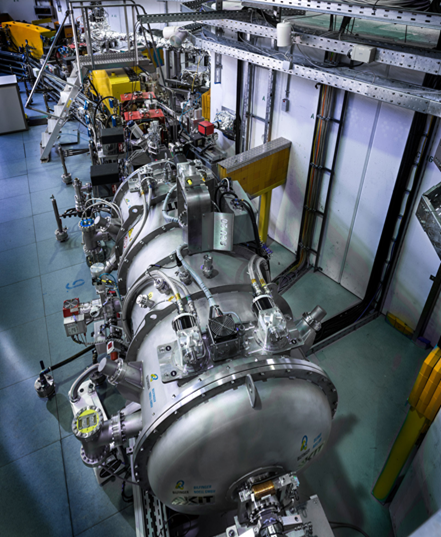
BioSAXS is a high flux beamline for small angle scattering (SAXS) experiments with applications in biology, chemistry, material sciences, and other research fields. It will enable the study of nanoscale chemical and biological systems in solution including surfactant and lipid mesophase systems, proteins and protein complexes, allowing highly radiation-sensitive samples to be studied using unprecedented levels of flux.
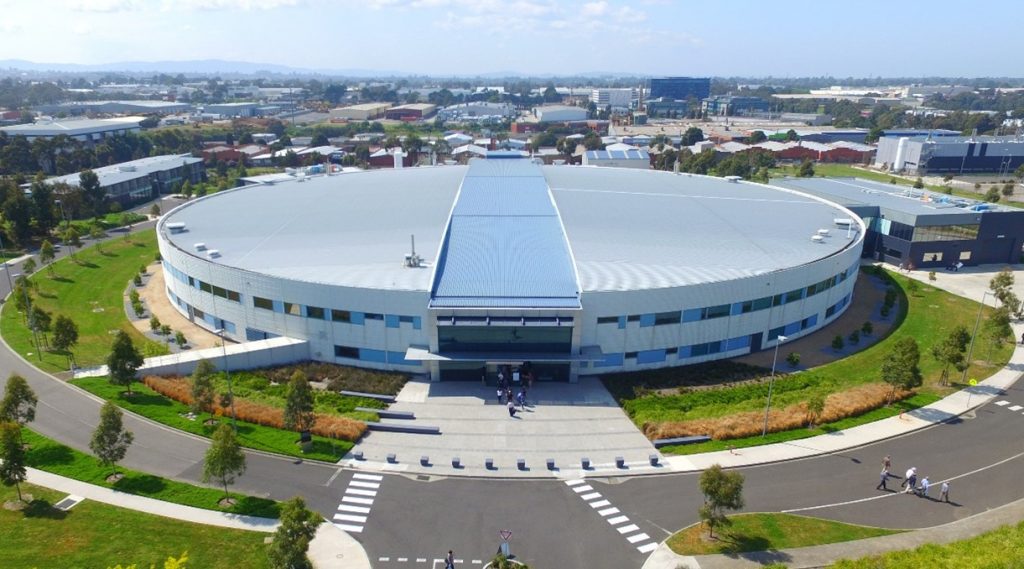
The Australian Synchrotron currently houses ten world-class beamlines covering a broad range of applications including health and biological sciences, earth and environmental sciences, advanced materials, engineering and manufacturing, energy and sustainability science, cultural heritage and archaeology as well as fundamental physics, chemistry and accelerator science. Under the Bright project, eight more beamlines are being added.
Bilfinger Noell GmbH is a company of Bilfinger SE. Operating worldwide in the product areas of nuclear service, nuclear technology and magnet technology, it has about 300 employees that work mainly in the field of engineering. See www.noell.bilfinger.com.

